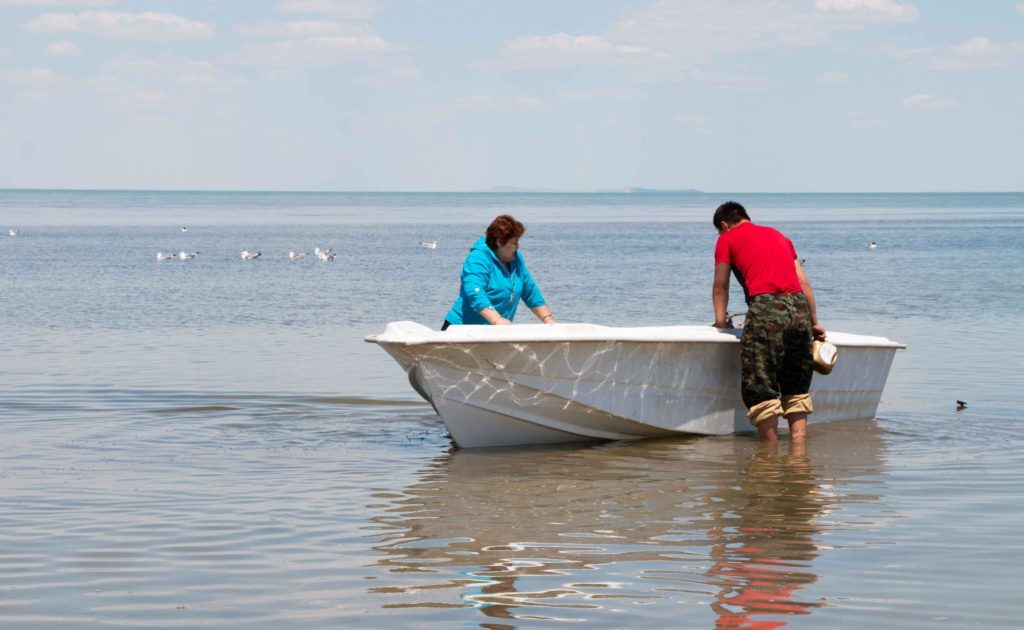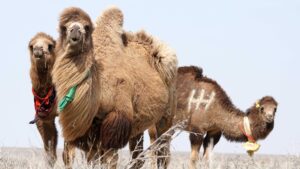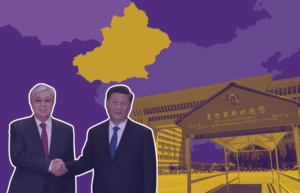Living Asia’s journalists took a trip to the North Aral Sea, in Kazakhstan, where they witnessed the opening of a fish breeding plant, a hatchery. There, they saw the full process of transformation of eggs into young fish and their journey to the delta lake. In addition, they learnt how fishery professionals are trained in this region and explored how these projects help replenish the lake’s fish stocks.
This article first appeared in Russian on ЛИВЕНЬ. Living Asia on 11 November 2020.
As it dried up in the second half of the 20th century, the Aral Sea split into two bodies of water, the North Aral and South Aral, also known as Small and Large Aral. While the larger South Aral has itself become several lakes, efforts to revive the northern part have met with some success: water levels have risen and salinity has dropped, leading to the return of fish.
In a previous article, Living Asia discussed the death of fish during spring spawning season when water is discharged from Small Aral to Large Aral and about the annual decline of fish stocks in the Aral Sea. Unfortunately, with current intensive fishing, no-one is involved in replenishing them. This depletes fish stocks. Not only in the Aral Sea are fish stocks rapidly disappearing: they also are endangered in the other lakes of the delta of the Syr Darya River.
Want more Central Asia in your inbox? Subscribe to our newsletter here.
For many years this region was the main supplier of fish for the entire former Soviet Union. In recent years, however, intensive fishing and poaching have caused immense damage to the ecosystem.
Ainakul Baimakhanova, coordinator of a group of projects for sustainable fishery in the Aral Sea region, said: “For locals, the fish living in these reservoirs is the most accessible foodstuff. More than one generation of fishermen grew up here. People are used to feeding their families this way. But the locals don’t think that the fish might tomorrow simply run out! Unsystematic, uncoordinated fishing counts as poaching, but the people living around the lake practice it anyway.”
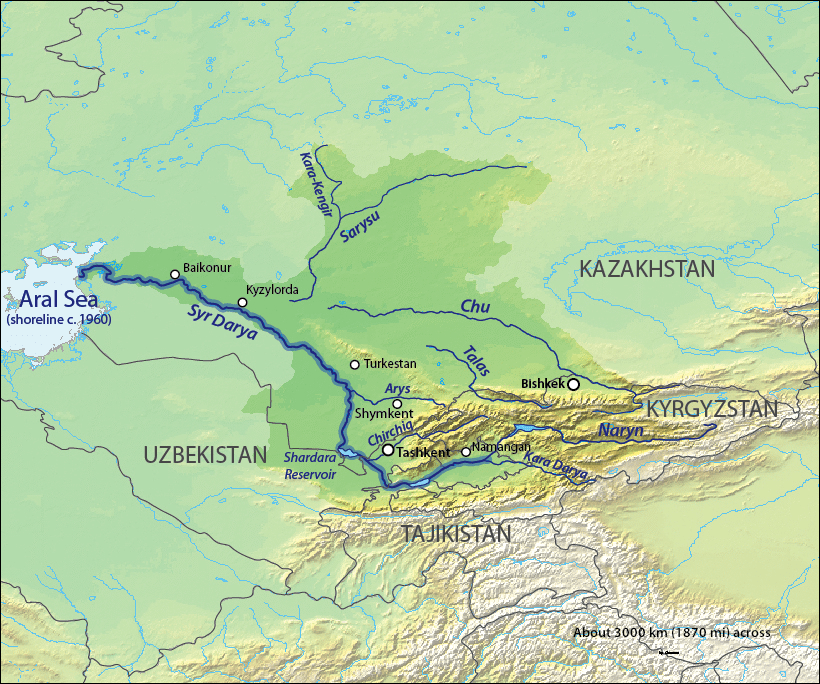
The reduction of fish stocks already negatively impacts all the delta ecosystems. After all, lakes in that region of Kazakhstan like Akkol, Mariamkol, Kuan Darya and others are a part of the wetlands. Furthermore, they are within the borders of key ornithological areas. Fortunately, it is possible to regenerate the unique delta ecosystem of the region. It is already being done by re-stocking the fish population.
Opening a hatchery
To date, aquaculture has almost completely disappeared from the Aral District. Breeding fish is barely practiced by the local population and there are practically no hatcheries in the area. To repopulate the lake, juvenile fish up to a year old are brought in from the neighbouring district, which is 180-190 km away. This raises the costs of fish production and causes high losses during transportation. The fry (very young fish) simply do not survive on the road.
The capacity of existing fish farms in this region simply is not enough. To replenish lake stocks faster and more sustainably, there is the idea of setting up mid-sized hatcheries in the field.
Thus, in early 2020, the local public association “Kazaly Oasis” established a commercial hatchery and fish farm in the village of Aqshataý in the Aral District. This was possible thanks to the support of the fishing processing business Igilikov, the producer’s cooperative Jambyl and the United Nations’ GEF Small Grants Programme in Kazakhstan.
Through the project, local people, most coming from a long line of former fishermen, were educated in fishery. The celebratory opening of the fish hatchery in late June 2020 was attended by the head of the local district government (or akim), various other officials and Living Asia’s team.
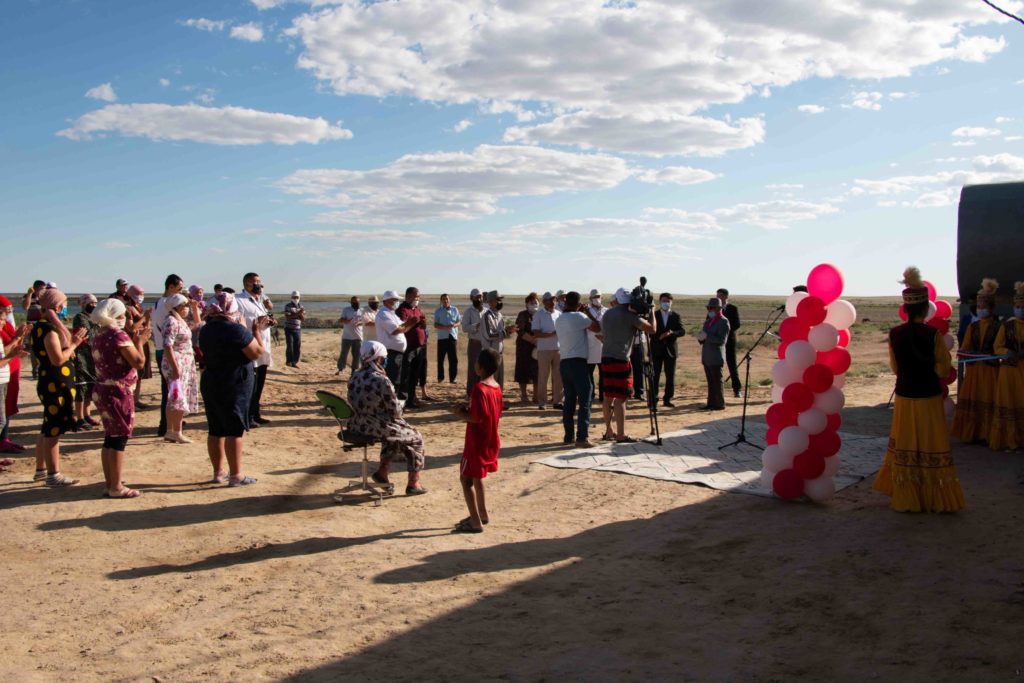
Mukhtar Orazbaev, akim of the Aral District, says: “This is a very essential project for our region. We will be able to take young fish from the hatchery to release them into the Aral Sea and the neighbouring Kazalinsky District. If the hatchery works year-round, the fish stock in the lakes and sea will significantly improve. You are doing a great job, I wish you success!”
How the hatchery works
The fish breeding plant is located in a fairly large space of 16 by 30 metres. This is where the closed water supply units purchased by the project are located.
All parameters of the technological process (water conditioning, feeding, checks and more) are monitored and managed with the help of programmable automated devices. This minimises the influence of natural factors on the technological process.
The hatchery also breeds female fish which were rescued from the Aral Sea. The eggs are first stored in flasks before they are transferred to pools. Fish farmers and fishery specialists carefully observe all the processes in order to raise as much fry (very young fish) as possible.
The fry and fingerlings (juvenile fish in various stages of development) are distributed among twelve lake fish farms. They are put in special bags and transported by car to different areas of the water reservoir.
Ainakul Baimakhanova says: “All the locals are interested in the success of this project because the lake, water and fish are their life. In our district everyone is interested in working with us. People want to develop their businesses, they want to create new job opportunities in the towns and villages. Thanks to the changes, the population’s social situation improves every year.”
Education centre for fish specialists
Due to the growing demand for fish, small local fish-processing workshops have emerged in the Aral Sea region. This has increased the need for specialists with a certain level of professional skills. Modern fish-processing plants have to handle different types of fish and prepare them for export according to EU regulations.
Moreover, the region is lacking qualified fish farmers who could support local fishermen to competently collect fish from reservoirs and restock them.
To solve these problems, in 2019 an education centre for sustainable fishery technology and the protection of fish resources was established on the premises of the NGO Khana Aral Tolkyny. For a year, the centre has been training fishery experts.

A new cohort of specialists started training in February 2020. Classes were held in the centre and on location in the villages while practical training took place in fisheries.
Fish farmers were taught the particularities of different types of fish, breeding methods, artificial reproduction, technology for larvae germination, feeding, selection basics for fish breeding and the organisation of production processes for pond farming.
Fish processors learned to sort their catch and studied processing equipment and production technologies for salted, pickled and spicy products, canned fish and seafood.
Read more: The Aral Sea artemia: small shrimp, high stakes
The opening of the education centre is very important for the region. Thanks to it, unemployed women and young people finally found an outlet for their strengths and abilities. New specialists are already finding employment in fisheries and fish processing facilities.
Ainakul Baimakhanova says: “We planned to graduate 40 fish farmers, but in the end we trained 52. We graduated a bit more than 200 fish processors, just like we planned. But aside from farmers and processing professionals, we still need highly specialised experts. The issue of their training has not been resolved yet.
Now we are making arrangements with the Employment Centre, which helps to find jobs for the unemployed, trains hairdressers and so on. The Employment Centre could include fish farming and processing in the professions they teach. Our graduates have gained qualitative knowledge, which is why business owners are happy to take them in. Can you imagine how many more people could still find work?
I am grateful to the Small Grants Programme for supporting our ideas. We really need these projects for the revitalisation of our region.
We think of the future. We want to preserve biodiversity and nature’s beauty for future generations. So that there will be many types of fish in the water reservoirs, so that flowers grow on the waterside, so that things change for the better. So that people have good living conditions, happy children and a comfortable home.”
Oksana Tarnetskaya
ЛИВЕНЬ. Living Asia
Translated from Russian by Nora Heinonen
For more news and analysis from Central Asia, follow us on Twitter, Facebook, Telegram, Linkedin or Instagram.
 Kazakhstan: replenishing the Aral Sea’s fish stocks
Kazakhstan: replenishing the Aral Sea’s fish stocks 
